MV Agusta Monza
MV’s handsome sand-cast dohc four was enlarged to 837cc for the Monza. High compression, hot cams, big Dell’Orto carbs and loud pipes boosted claimed maximum output to 85bhp.
Red and silver paintwork, low handlebars and a suede-covered single seat gave a racy look. Owners faced a dilemma of whether to cover the engine with an optional fairing.
In 1977 the MV Agusta marque was nearing the end of its era of greatness on road and racetrack. Phil Read had won the factory’s 17th consecutive 500cc world championship three years earlier, before the thundering Italian four-stroke had finally been outpaced by Japanese two-strokes. The Agusta firm’s financial problems were not helped by sales of its unprofitable roadgoing fours.
But MV had one final throw of the dice in the Monza, the fastest and most exotic superbike that the original Agusta firm would ever build. Essentially a hotted-up version of the 750S America, which had been introduced to the US market two years earlier, the Monza combined breathtaking, racetrack-inspired styling with stunning performance from a biggest yet 837cc four-cylinder engine.
In both style and spirit the Monza was very close to the America, itself a direct descendent of the 750 Sport with which MV had belatedly arrived on the superbike scene at the start of the decade.
Like the Sport, the America was powered by a bellowing four-cylinder engine whose dohc layout, but not its shaft final drive, was inspired by MV’s grand prix machines. The America was so named because it had been developed at the request of the firm’s US agent, and had been intended for sale exclusively in the States.
As well as more angular styling plus a red and silver paint scheme inspired by the all-conquering racers, the America had a larger 790cc engine, smaller 26mm carbuettors (they were easier to keep balanced), left-foot gearchange, improved output of 75bhp, and top speed of over 130mph (210km/h). The America was heavy, its high-speed handling was not perfect and it was expensive. (Its $6000 price explained why far fewer were sold than the US importer had predicted.) But it was a hugely desirable motorbike.
The Monza was even better. Its engine was enlarged by a 2mm increase in bore, giving dimensions of 69 x 56mm and capacity of 837cc. Compression ratio was increased, a new Marelli distributor was fitted, and the camshafts were new. Reverting to the Sport’s larger 27mm Dell’Orto carburettors also helped increase claimed output to no less than 85bhp at 8750rpm.
Meticulous preparation
Monza performance was further boosted because the bikes were prepared by MV’s former race team mechanics led by chief engineer Arturo Magni (who by this time, realizing that MV was nearing the end, had also set up his own firm nearby, selling cast wheels and tuning parts). This meticulous preparation meant that a new Monza roared to over I40mph (225km/h), especially when fitted with a Magni exhaust with its four elegantly curved black silencers.
Chassis changes were minimal, as the Monza combined MV’s familiar frame with the cast wheels and triple-disc Brembo brake system that had been an option on later Americas. One thing that had changed was the bike’s name, at least in Britain, where it had been called the Boxer until Ferrari (who had a car of that name) had objected. Whatever the name, few were built before MV ceased production in 1978. The Monza was a suitably glorious way to end the line.
MV’s big roadsters differed from the grand pri.x bikes in their fitment of a heavy, power-sapping shaft final drive system.
The rear- threequarters view emphasizes the stylish curve of the free-breathing, black finished Magni exhaust system, essential for maximum power and noise.
MV Magni - Ultimate Agusta
In many enthusiasts' view the finest air-cooled MVs of all are those kitted out with parts from the firm run by former race team manager Arturo Magni and his son Giovanni. Magni's frame was a much more rigid twin- oop design, similar to those of MV's factory racers, and combined with a Magn chain drive conversion to give greatly improved handling. As well as the disc nctive exhaust system, other Magni parts included a 862cc cylinder and piston kit, plus numerous chassis and bodywork components
Specification MV Agusta Monza (1977)
- Engine Air-cooled dohc eight-valve four
- Capacity 837cc (69 x 56mm)
- Maximum power 85bhp @ 8750rpm
- Transmission Five-speed, shaft final drive
- Frame Steel twin downtube
- Suspension Telescopic front; twin shocks rear
- Brakes Twin discs front; disc rear
- Weight 529lb (240kg)
- Top speed 145mph (233km/h)
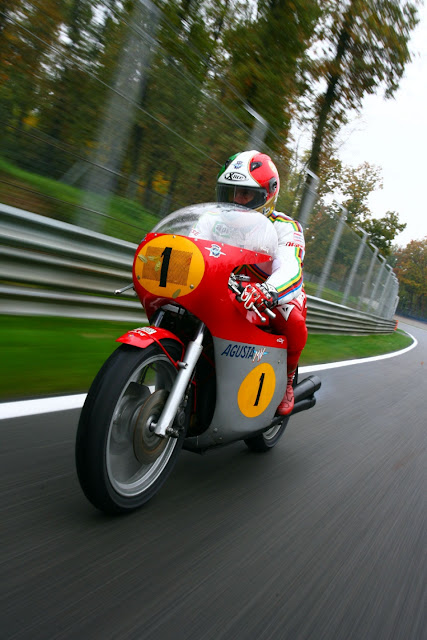

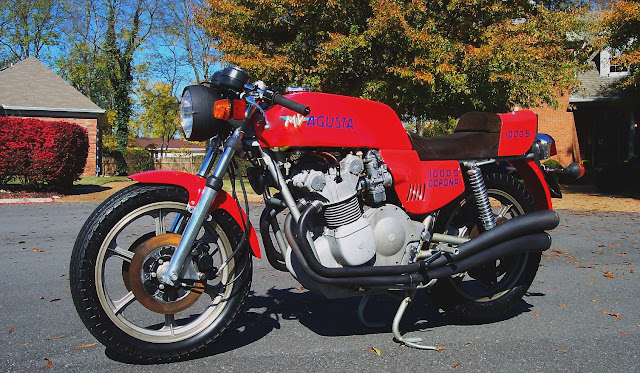

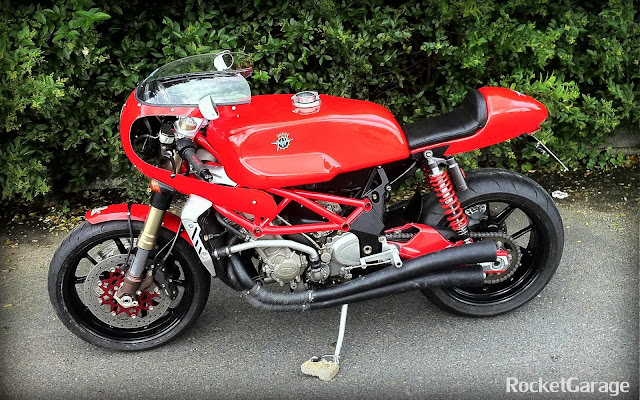
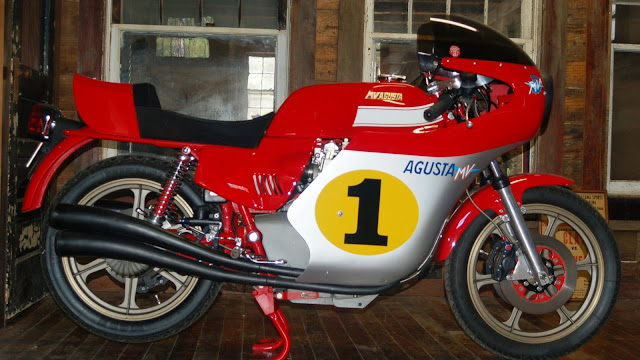
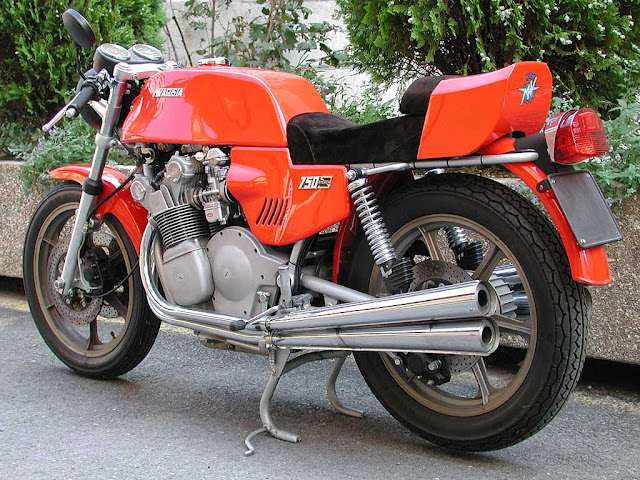

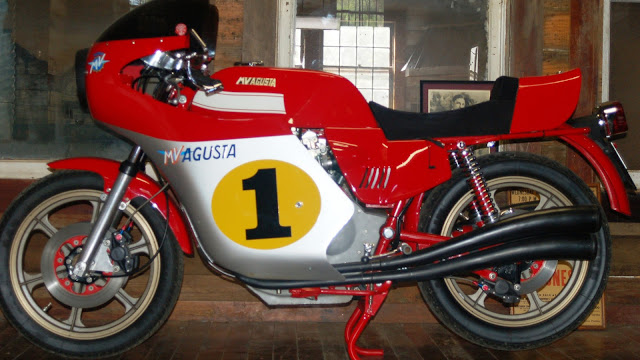



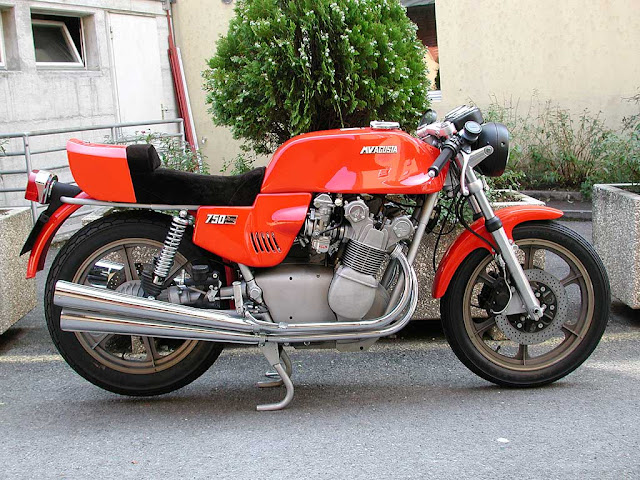










0 comments: